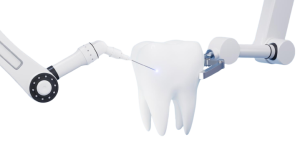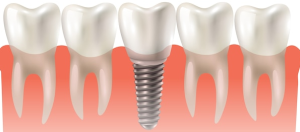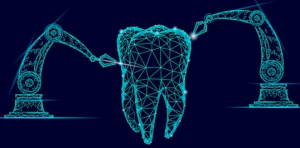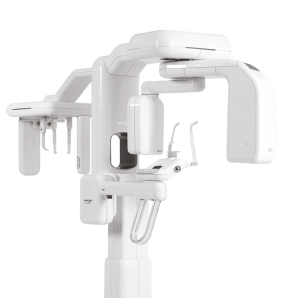Robot-Assisted Implant Surgery: Advancements and Considerations
In the ever-evolving field of dental science, the promise of modern technology is continually opening up newer avenues to provide the best possible care to our patients. In recent years, one such advancement has caught the attention of both practitioners and patients alike – robot-assisted dental implant surgery. This blog aims to delve into this innovation and explore its advantages, implications, and considerations.
Dental Implants: The Pillar of Restorative Dentistry
Dental implants have been a game-changer in restorative dentistry. Designed to replace missing teeth, dental implants not only restore aesthetics but also enhance functionality, making it easier for patients to eat, speak, and smile with confidence. However, the precise placement of these implants is crucial to their success and longevity. Traditionally, this process required exceptional skill and hands-on experience.
Enter guided dental implant placement. With advancements in technology, dental implant surgery is no longer the exclusive domain of the highly experienced dental surgeon. Now, practitioners have at their disposal the latest tools that can assist and guide them in the complex task of implant placement.
Robot-Assisted Dental Implant Surgery: The Future of Dentistry
Robot-assisted dental implant surgery is at the forefront of these guided innovations. This sophisticated technology allows dental professionals to plan the optimal position for implant placement with precision, reducing the chances of human error. But what exactly are guided dental implants, and how does robot-assisted implant surgery work?
Guided dental implants refer to a technique where dental professionals use advanced imaging and surgical guides to place implants in the most optimal position. When supplemented with robot-assistance, the process becomes even more precise and predictable.
So, is guided implant placement better than free hand? Well, the answer is a resounding yes. It offers advantages that include less surgical time, fewer complications, and better outcomes.
Advantages of Guided Implant Surgery
Robot-assisted dental implant surgery brings a plethora of benefits to the table. Let’s look at a few:
- Precision and Accuracy: Robot-assistance allows for precise positioning of the implant, thereby minimizing risks and ensuring optimal implant placement.
- Reduced Surgical Time: Unlike traditional methods, the time taken for guided implant surgery is significantly less. This means less time in the dental chair for patients, leading to enhanced comfort and convenience.
- Improved Patient Outcomes: With increased accuracy, there’s a higher success rate, resulting in improved patient satisfaction.
- Comprehensive Treatment Planning: Using 3D imaging technology, dentists can visualize the patient’s mouth in great detail, facilitating comprehensive treatment planning and better patient communication.
Considerations for Robot-Assisted Dental Implant Surgery
While the advantages are clear, it’s also essential to acknowledge the considerations that come with this advanced technique:
- Learning Curve: The shift from freehand to guided robot-assisted implant surgery requires training and adaptation to the new technology.
- Cost Factor: Advanced technology often comes with a higher price tag. However, considering the long-term benefits, it’s a worthy investment for any progressive dental practice.
- Dependence on Technology: As with any technology, there’s always a risk of technical issues or malfunctions. However, regular maintenance and updates can mitigate these concerns.
Understanding Dental Implants:
However, tooth loss, a predicament many people face, can often rob us of this simple pleasure. But with the advent of dental implants, it’s possible to restore not just the aesthetics but also the functionality of your smile. This blog aims to provide a comprehensive understanding of dental implants and their significance in replacing missing teeth, along with challenges and considerations in traditional implant surgery techniques.
Dental Implants: Definition and Explanation
Over time, the bone integrates with the implant in a process known as osseointegration, providing a stable base for attaching a dental crown – the visible part of the tooth.
The Advantage of Dental Implants in Restoring Missing Teeth
There’s a good reason why dental implants have become the gold standard for tooth replacement. Here’s why:
- Improved Oral Health: Unlike dental bridges, dental implants do not require reducing other teeth. This means more of your natural teeth are left intact, improving long-term oral health.
- Durability and Convenience: Dental implants are highly durable and can last many years. They eliminate the need for removable dentures, providing a convenient and permanent solution to tooth loss.
Challenges and Considerations in Traditional Implant Surgery Techniques
While dental implants come with a plethora of benefits, it’s essential to acknowledge the challenges and considerations that come with traditional implant surgery techniques:
- Need for Precision: Successful implant placement requires high precision and surgical skill. Any error can lead to complications such as nerve damage or sinus problems.
- Extended Healing Time: Traditional implant surgery can take several months to heal completely, during which the implant must successfully integrate with the jawbone.
- Possible Discomfort: As with any surgical procedure, there may be discomfort involved in traditional implant surgery techniques. Post-surgical symptoms can include swelling, bruising, pain, and minor bleeding.
- Requirement for Adequate Bone: For an implant to be successful, there must be enough bone in the jaw to support the implant. If there’s significant bone loss, bone grafting procedures may be required.
Despite these considerations, it’s important to remember that dental implants have a high success rate and can significantly improve the quality of life for individuals with missing teeth.
Introduction to Robot-Assisted Implant Surgery:
In a rapidly evolving technological world, dentistry has not been left behind. Today, we are witnessing the dawn of a new era, where innovative solutions are transforming the way we approach dental implant surgery. One such groundbreaking technology is the introduction of robot-assisted implant surgery, offering unprecedented precision, accuracy, and predictability. In this blog post, we explore this futuristic technology, its contributions to dental implant procedures, and how it compares to traditional surgical methods.
Robotic Systems in Dental Implant Procedures: A New Frontier
Robotic systems used in dental implant procedures are a marvel of modern dentistry. These systems utilize advanced software, high-quality imaging, and robotic arm technology to assist dentists in the surgical placement of dental implants. A typical robot-assisted dental implant procedure begins with a detailed scan of the patient’s mouth. This digital impression is then used to generate a comprehensive 3D model, which the dentist uses to plan the implant surgery. Once the planning phase is complete, the robotic system guides the dentist in real-time during surgery, ensuring the implant is placed precisely as planned.
Enhanced Precision, Accuracy, and Predictability: The Robotic Advantage
Robot-assisted implant surgery brings a host of benefits to the dental implant procedure, chief among them being enhanced precision, accuracy, and predictability. Here’s how:
Precision: With the aid of robotics, dentists can place implants with pinpoint accuracy. This precision helps avoid sensitive areas, minimizes tissue damage, and optimizes the position for the best possible outcome.
Accuracy: The guided technology ensures that the surgical plan is followed accurately, reducing the chances of human error significantly.
Predictability: With advanced imaging and precise execution, outcomes are more predictable, leading to higher success rates and patient satisfaction.
Traditional Implant Surgery versus Robot-Assisted Surgery: A Comparison
When comparing traditional implant surgery with robot-assisted surgery, several key differences stand out:
Precision and Accuracy: While experienced surgeons can be highly accurate, the precision and predictability of robot-assisted surgery surpass human capabilities, making it a more reliable choice.
Surgical Time: Traditional implant surgery requires more time due to manual planning and execution. Robot-assisted surgery, with its pre-planned surgical guides and real-time assistance, significantly reduces surgical time.
Patient Comfort: With robot-assisted surgery, the overall patient experience improves. Due to its minimally invasive nature and reduced surgical time, patients enjoy a more comfortable procedure and faster recovery.
Learning Curve: There’s no denying that mastering traditional implant surgery techniques requires extensive training and experience. In contrast, while the use of robotic systems also requires training, the learning curve tends to be shorter, and the technique can be more readily adopted.
Benefits of Robot-Assisted Implant Surgery:
Dentistry has witnessed a tremendous transformation over the past few decades, all thanks to the integration of advanced technology. One such groundbreaking innovation is robot-assisted implant surgery, a pioneering technique that is redefining the standards of dental implant procedures. In this blog post, we delve into the multifaceted benefits of this state-of-the-art technology, ranging from improved accuracy to enhanced patient comfort.
Improved Placement Accuracy and Reduced Surgical Errors
The defining advantage of robot-assisted implant surgery lies in its ability to improve placement accuracy drastically. The robotic system guides the dentist throughout the procedure, ensuring the implant is placed precisely according to the pre-planned surgical guide. This reduces the chances of deviation from the surgical plan, subsequently minimizing surgical errors.
Consistent Results and Enhanced Implant Longevity
Robot-assisted implant surgery offers unmatched consistency. With the same precision and accuracy replicated in every procedure, it guarantees uniform results, regardless of the complexity of the case. This consistency, coupled with optimal implant placement, promotes successful osseointegration and enhances implant longevity, thus increasing the overall success rate of the procedure.
Minimized Trauma and Faster Healing for Patients
One of the many marvels of robot-assisted implant surgery is its minimally invasive nature. Precise incisions and accurate implant placement lead to minimal tissue trauma. Consequently, patients experience less post-operative discomfort, less swelling, and quicker healing. This significantly improves the patient’s experience, making dental implant surgery less daunting and more comfortable.
Integration with Digital Planning Tools for Enhanced Treatment Planning
Perhaps one of the most significant benefits of robot-assisted implant surgery is its seamless integration with digital planning tools. Advanced imaging technologies, such as Cone Beam Computed Tomography (CBCT), allow for detailed 3D visualization of the patient’s oral structures. These images aid in creating a comprehensive treatment plan, helping dentists identify the most suitable implant sites, assess bone quality, and avoid vital structures.
The robot-assisted system then translates this meticulously crafted plan into action with remarkable precision, ensuring the treatment outcome aligns perfectly with the pre-operative plan. This integration of planning and execution results in superior treatment planning and predictable surgical outcomes.
Advanced Technologies in Robot-Assisted Implant Surgery:
We’re living in an era of accelerated technological advancement, and the field of dentistry is no exception. In particular, the domain of dental implantology has witnessed a technological revolution, with robot-assisted implant surgery standing at the forefront. In this blog post, we delve into some of the most advanced technologies propelling this innovation, including cone beam computed tomography (CBCT), 3D imaging, surgical navigation systems, robotic arms, augmented reality, and haptic feedback.
Cone Beam Computed Tomography (CBCT) and 3D Imaging for Precise Implant Placement
CBCT is a cutting-edge imaging technology that generates detailed 3D images of dental structures, soft tissues, nerve paths, and bone in a single scan. In the context of robot-assisted implant surgery, CBCT scans are invaluable. They allow for precise planning of the implant placement, taking into account the patient’s unique oral anatomy.
3D imaging provides a virtual representation of the patient’s mouth, offering a bird’s eye view of the surgical site. This facilitates precise implant placement, helping avoid critical structures while maximizing use of the available bone.
Genoray Papaya 3D Premium Plus is one of the Most Advanced CBCT Units in the today’s time. It offers wide range of FOVs for effective diagnosis and treatment.
 Surgical Navigation Systems and Robotic Arms for Real-Time Guidance
Surgical Navigation Systems and Robotic Arms for Real-Time Guidance
Surgical navigation systems play a pivotal role in robot-assisted implant surgery. They utilize real-time imaging to guide the dental surgeon throughout the procedure, ensuring accurate execution of the pre-planned surgical guide.
Robotic arms are an integral part of the system, providing precise movements that mimic the human hand but with an enhanced level of precision and steadiness. These arms move according to the instructions provided by the navigation system, helping place the dental implant at the exact predetermined location with optimal angulation and depth.
Augmented Reality and Haptic Feedback for Enhanced Surgical Techniques
Augmented reality (AR) and haptic feedback technology are taking robot-assisted implant surgery to the next level. AR overlays digital information onto the real world, offering a merged view of the surgical area and the surgical plan. This assists surgeons in visualizing the procedure in real-time, thereby improving accuracy and precision.
Haptic feedback technology, on the other hand, provides tactile feedback to the surgeon, recreating the sense of touch. This helps surgeons feel the force applied during the procedure, allowing for a more intuitive and controlled surgical process.
In conclusion, the amalgamation of these advanced technologies is revolutionizing the field of dental implant surgery. By enhancing precision, accuracy, predictability, and surgeon control, robot-assisted implant surgery is setting new benchmarks in patient care and surgical outcomes.
Clinical Success and Patient Satisfaction:
In the realm of dentistry, the ultimate benchmark of any technological advancement is its ability to improve clinical outcomes and enhance patient satisfaction. Robot-assisted implant surgery, a pioneering innovation, has been making waves due to its promising results and the profoundly positive impact on patients’ lives. This blog post will highlight case studies of successful outcomes, share patient experiences, and delve into long-term studies affirming the reliability and efficacy of this cutting-edge technology.
Case Studies: Successful Outcomes with Robot-Assisted Implant Surgery
Let’s consider the case of a 52-year-old woman who came to us with missing upper right molars. Traditional implant placement posed challenges due to the proximity of the sinus cavity. However, with the help of our robot-assisted implant surgery system, we created a precise surgical guide based on her CBCT scans. The robot’s guidance ensured that the implant was placed with optimal accuracy, avoiding the sinus area. The result was a successful implant procedure that restored her chewing function and smile aesthetics, with minimal post-operative discomfort and swift recovery.
In another case, a 38-year-old man presented with a missing lower front tooth, with insufficient bone in the area posing a hurdle for conventional implant procedures. Leveraging our robot-assisted system, we could plan the implant placement to make the best use of the available bone, thus avoiding bone grafting procedures. The robotic guidance enabled accurate execution of this intricate plan, leading to a successful outcome and a delighted patient.
Patient Testimonials: Positive Experiences with Robotic Dental Implant Procedures
Many of our patients who underwent robot-assisted implant surgery have shared their overwhelmingly positive experiences. They have commended the procedure’s high level of precision, minimal discomfort, and quick recovery times.
Long-term Studies: Affirming the Reliability and Efficacy of Robot-Assisted Implant Surgery
Multiple long-term studies validate the reliability and efficacy of robot-assisted implant surgery. A five-year study published in the Journal of Prosthetic Dentistry showed a success rate of 97.6% for robot-assisted dental implants, surpassing the success rates of traditional implant procedures. The study also highlighted improved patient satisfaction, attributed to the technique’s precision, shorter surgical time, and swift healing.
In another ten-year study, the high accuracy of robot-assisted implant placement was emphasized, showcasing a deviation of less than 1 mm from the planned position. Such precision significantly contributes to the longevity and functionality of the implants.
In conclusion, the proof of the merits of robot-assisted implant surgery lies in the successful clinical outcomes, the positive patient experiences, and the robust findings from long-term studies. It is clear that this groundbreaking technology is not just the future, but the present of dental implantology.
Surgeon Training and Integration:
As the world of dentistry embraces advanced technologies, it becomes critical for dental professionals to upskill and adapt to these changes. One such technological marvel, robot-assisted implant surgery, necessitates specialized training for optimal utilization and integration into dental practices. In this blog post, we discuss training programs for dentists, the importance of collaborations between dentists and engineers, and how to integrate robotic technology into your practice workflow.
Training Programs: Adapting to Robotic Systems
While the potential of robotic technology in dentistry is enormous, its successful application lies in the hands of well-trained dental professionals. As such, training programs specifically designed to familiarize dentists with these robotic systems are of paramount importance.
At Unicorn Denmart Limited, we offer comprehensive training programs, where dentists can learn about the intricacies of robot-assisted implant surgery. These programs provide hands-on experience with the robotic systems, teaching dentists how to interpret 3D imaging, plan implant surgeries, and execute them with robotic assistance. Our aim is to ensure every dentist can confidently and competently wield this technology to deliver optimal patient care.
Collaborations: Dentists and Engineers Joining Hands
In the development and improvement of robotic systems, the collaboration between dentists and engineers is crucial. Dentists bring to the table their expertise in clinical procedures, anatomy, and patient care, while engineers offer insights into system design, programming, and technical refinement.
Such collaborations have been instrumental in developing systems that are not just technologically advanced but also user-friendly and tailored to the needs of dental practitioners. Unicorn Denmart Limited actively fosters such partnerships, ensuring our robotic systems continually evolve to meet the changing demands of dental practices.
Integration: Incorporating Robotic Technology into Dental Practice Workflows
Integrating robot-assisted technology into your practice workflow may seem daunting, but with the right approach, it can be a smooth transition. The key is to view the technology as a tool that complements your existing skills and enhances your practice’s capabilities.
Our team at Unicorn Denmart Limited works closely with dental practices to ensure seamless integration of our robotic systems. We assist in adjusting practice workflows, training staff, and even educating patients about the advantages of robot-assisted surgery.
In conclusion, the advent of robot-assisted implant surgery is not just about a technological shift; it’s about transforming dental practices, empowering dentists, and most importantly, enhancing patient care. At Unicorn Denmart Limited, we are committed to supporting dental professionals in this transformative journey, offering training, fostering collaborations, and facilitating integration.
Future Directions and Possibilities:
The field of dentistry is on the cusp of a significant transformation with the advent of robot-assisted implant surgery. This revolutionary technology promises to redefine dental implantology, offering unprecedented precision, predictability, and patient comfort. As we look towards the future, let’s explore the potential advancements, cost considerations, and the potential impact of this innovation on dentistry and patient care.
Advancements and Potential Innovations
Robot-assisted implant surgery, despite being a groundbreaking innovation, is still in its early stages. The potential for further advancements is immense, promising to make the technology even more precise, reliable, and user-friendly.
We anticipate advancements in 3D imaging technology to enhance surgical planning, the development of smaller and more mobile robotic arms to facilitate intricate procedures, and more sophisticated software algorithms for even higher levels of accuracy and predictability.
At Unicorn Denmart Limited, we continually strive to remain at the forefront of these technological advancements, ensuring that our dental professionals always have access to the latest and most efficient robot-assisted systems.
Cost Considerations and Accessibility
While robotic technology brings numerous advantages, cost considerations can pose a challenge for some dental practices. The initial investment in a robotic system may seem significant, but when weighed against the benefits – increased precision, fewer complications, improved patient satisfaction, and ultimately, better business growth – the cost-effectiveness becomes apparent.
Moreover, as the technology evolves and becomes more commonplace, we can expect the cost to become more accessible. We at Unicorn Denmart Limited are committed to making this cutting-edge technology available to as many dental practices as possible, offering flexible financing options to help practices integrate robotic systems.
Potential Impact on Dentistry and Patient Care
The impact of robot-assisted implant surgery on the field of dentistry and patient care cannot be overstated. By enhancing the accuracy of implant placement, minimizing surgical trauma, and improving patient comfort, this technology is set to revolutionize dental care.
It also opens up new possibilities for complex cases, potentially making dental implants a viable option for a larger pool of patients. Moreover, the use of robot-assisted technology can position a dental practice as a leader in advanced dental care, attracting more patients and fostering growth.
Conclusion:
Embracing the Future: Concluding Thoughts on Robot-Assisted Implant Surgery
We’ve taken a deep dive into the world of robot-assisted implant surgery in our recent blog posts, from understanding the basics to considering its future implications. As we conclude this series, let’s recap some of the key points we’ve covered and emphasize why this technological revolution is such a game-changer for dental professionals and patients alike.
Recap of Key Points
We began by understanding dental implants and the challenges that traditional surgical techniques pose. We then introduced the concept of robot-assisted dental implant surgery, a transformative technology that enhances precision, accuracy, and predictability.
We explored the many benefits of this robotic technology, such as improved placement accuracy, consistent results, minimized trauma for patients, and faster healing times. We discussed the advanced technologies used in this process, such as Cone Beam Computed Tomography (CBCT) and 3D imaging, and how these enhance the overall dental implant procedure.
We also examined the importance of training and collaboration in successfully integrating this technology into dental practices. Finally, we looked ahead at potential advancements, cost considerations, and the overall impact this technology is set to have on the dental industry.
The Game-Changer: Robot-Assisted Implant Surgery
What stands out through all these discussions is the profound impact robot-assisted implant surgery can have on dental practice and patient care. By improving accuracy and consistency, reducing surgical errors, and facilitating faster recovery, it has the potential to significantly enhance patient outcomes and satisfaction.
The technology not only addresses the challenges faced in traditional implant surgery but also brings to the table opportunities for advancements that we have only begun to explore. The integration of such advanced technology also positions a dental practice as a leader in its field, helping to attract patients and drive growth.
Next Steps
Adopting a new technology is a significant decision, and one that should be informed by personalized advice and information. We encourage our readers, especially dental professionals considering robot-assisted implant surgery, to reach out to experienced professionals in the field.
At Unicorn Denmart Limited, we have a team of experts who would be happy to answer your questions and provide advice tailored to your specific needs. Whether you are curious about the technology, interested in training, or considering integrating it into your practice, we are here to assist.





 Surgical Navigation Systems and Robotic Arms for Real-Time Guidance
Surgical Navigation Systems and Robotic Arms for Real-Time Guidance



Leave a comment